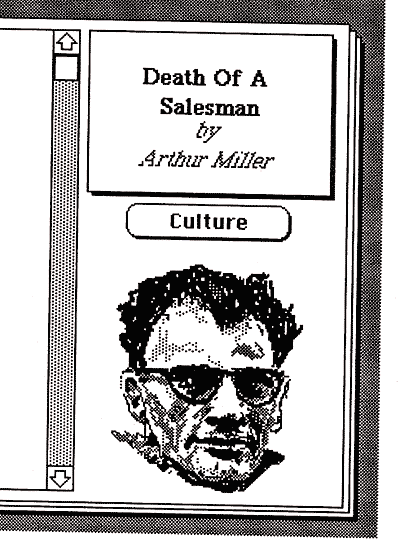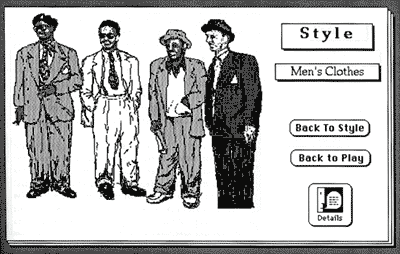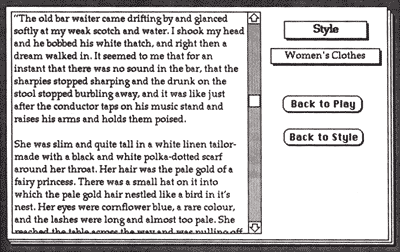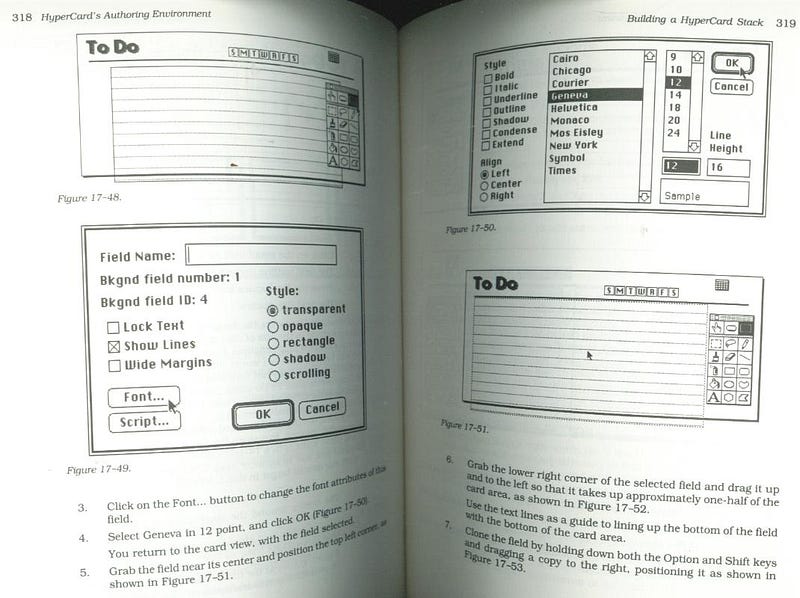
Reflecting on a software ahead of its time, and its networks
Rest in peace, HyperCard. It was one of the most important applications in the history of personal computing, in my humble opinion, and responsible for the “amazing bloom” of ideas and applications noted by Ben Hyde and Matt Jones today too. (Ed. This article was originally published at cityofsound.com on 4th April 2004.) I made a few things with it, and I’m pretty sure they weren’t in the ‘amazing bloom’ class — but I can certainly say HyperCard was a massive influence on who I am now.
I spent 4 years of a Computer Science degree trying to avoid programming, electronics and networks and instead heading towards artificial intelligence, human-computer interaction, systems analysis, ‘automation and society’, and ultimately tooling around on Macs. Consequently, my final year project back in 1991 involved building a new concept for educational software, based around HyperCard, and writing a dissertation on ‘Gender Bias in Computer Science’, looking at why so few women made it into the industry/culture at that point. I supposed that a less didactic, more interdisciplinary approach, whereby the user/student could find their own way through a rich information set, would be more equitable.
So I built a demonstration HyperCard stack around Arthur Miller’s play ‘Death of a Salesman’ (then a personal favourite), which would have the entire text of the play, with information on the whole of ‘50s culture sitting behind it, at the user’s beck and call. So in a passage of the play featuring a musical motif, info on ‘50s music would become clickable, and the user could just plunge down that rabbit-hole of popular culture, veering away from the text towards ‘50s music. If Miller referenced some item of fashionable clothing, that text would be clickable, enabling the user to widen out their interest towards that aspect of culture. Ideally returning to the text someday, but there would’ve been enough info to just keep — on — going.
The stack is stuck on an 800kb floppy disk somewhere, and I guess that’s where it’ll stay, but here’s a few vintage pics I’ve found in my dissertation, though:



The HyperCard design patterns take me right back (those rounded buttons; those early ‘flat-faced’ dialogue icons). Check my inconsistency of interface component layout, too! I actually got much further than these images convey, but I guess it’s lost now.
For instance, I distinctly remember recording a trumpet solo from Miles Davis’ Kind Of Blue somehow (shoving a tape recorder up against a microphone? Can’t remember if the Mac SE had such a thing…), in order to make it really multimedia. Note also the dodgy dot-matrix pointilliste style encouraged by MacPaint — an early obsession with pixels which had previously been nurtured by the Spectrum’s The Artist. I was basically drawing that stuff dot by dot, using the pencil tool at the lowest setting.
Of course, I never finished it (the whole of ‘50s culture?!). But I wasn’t alone there. Phil Gyford recalls building a conceptually similar stack, at roughly the same time:
I never finished that stack — hence some non-functioning buttons — but I’m not sure it was ever finishable; I wanted the user to feel they could get information about anything, with tea being just a starting point from which they would head off on a branching path towards all kinds of unrelated and esoteric knowledge. What crazy, crazy days they were.
Exactly what I was trying to do! I think those of us playing with HyperCard at that point (and using the internet in the background, without really realising we were) where actually beginning to reach out for the web. That “branching path towards all kinds of unrelated and esoteric knowledge”? What else could it be? But how could we know then?
Here’s how the 21-year old me put it in 1991, in my final year BSc Computer Science dissertation (full excerpt below):
So the underlying metaphor is of a huge chunk of cross-referenced, multi-media information which can be viewed from a number of angles which could be pre-defined or created depending on the eventual sophistication of the software.
Akin to Vannevar Bush’s ‘trails’ notion, which I hadn’t encountered then (never mind Nelson, Berners-Lee and beyond), I was driving at something which I could only conceive would sit on CD-ROM—hey, they were big then, OK? Besides, few personal computers were usefully networked. It would be some kind of informational object which people could pursue their own routes through, depending on their preference, with multiple entry points. Instead of Phil’s tea, I had Death Of A Salesman, or McCarthyism, or women’s fashion.
CD-ROMs seemed to promise such limitless space that we didn’t even think scalability. And we weren’t quite ready for the infinitely ‘dispersed editorial’ and mass amateurisation of everything we find online now. It was perfectly conceivable that knowledge would be produced and structured just as it had been thought to for years i.e. by a single well-informed author, or commissioned team of same. There were technical barriers too, despite its innovative architecture.

HyperCard was instantly accessible, and made perfect sense in 1991—yet, it turns out, it was far, far ahead of its time too. Thank you, Bill Atkinson.
HyperCard wasn’t structured to enable us to make the conceptual leap to conceiving of this informational object to be networked and open, with increasingly low barriers to entry as per the web. But it certainly began to lead those of a certain persuasion in that direction. We owe it a lot.
Here’s an excerpt from my dissertation regarding the HyperCard implementation of the play Death of a Salesman. It was written in 1991 — please forgive the naïvety of youth:
This stack illustrates elements of the design philosophies described in Appendix A. In particular it aims to describe an interdisciplinary approach to education. The teacher and class should work through the play together, and then the pupils should be left to explore, with the teacher on hand.
The play was written in 1949 and the stack aims to provide a taste of the early ’50s for the reader. To this end, options are available describing the style of the time (from fridges to clothes, with details of the clothes highlighted e.g. double-breasted jackets, pleated baggy trousers etc., or a description of a young woman from a Raymond Chandler book); the music of the time (click on a button and a 10-second snatch of Miles Davis is played, with accompanying notes, or a description of a jazz gig from Kerouac — another reference to explore); the history and sociology of the time (the American dream); other literature in a similar vein (‘Look Back In Anger’, ‘On The Road’, ‘Catcher In The Rye’); related art of the time (Edward Hopper) and so on.
The book is not forgotten as the child can click on a button to obtain author’s insight into a section of the play with a possible question from the author (help from the teacher is advised), or can click another button to find out more about the author.
The key concepts of providing an information handling tool and allowing the pupil to explore the information are illustrated in this demonstration. The angle that the child views the ’50s from is ‘Death Of A Salesman’, and this will be the primary focus of their work, but they have on tap the whole of ’50s culture to immerse themselves in.
The ultimate implementation of this idea would be a compact disc (or two) labelled ‘The 50s’ which would contain sounds, film footage, animation and text illustrating all aspect of life during this decade. According to the user envisaged by a particular teacher, the ‘focus’ of the software could be set to provide some structure. So, the disc could be used in English Literature to aid in teaching the play ‘Death Of A Salesman’ and this play would always be readily accessible and even influence the information displayed to the pupils.
The underlying software should be dynamic enough to allow a different viewpoint to be set, say a History teacher discussing McCathyism. The software would then re-align itself around this topic, though with the same data available, and the information accessed in a way that represents this new ‘bias’ i.e. Arthur Miller would probably be encountered first through his performances in the dock at the Un-American Activities trials rather than as a playwright, although the pupil could then go on to view ‘Death Of A Salesman’ in the same way as they do in this demo.
So the underlying metaphor is of a huge chunk of cross-referenced, multi-media information which can be viewed from a number of angles which could be pre-defined or created depending on the eventual sophistication of the software. Note also that it is used as an educational tool, rather than a game-style piece of educational software which research has found to be preferred by boys.
If you valued this piece, please recommend it — in other words, press ❤ below, so that others may find it too. This article was originally published at cityofsound.com on 4th April 2004.
Leave a comment